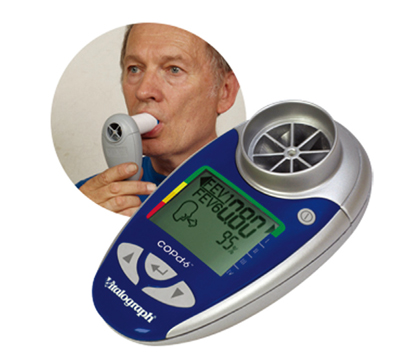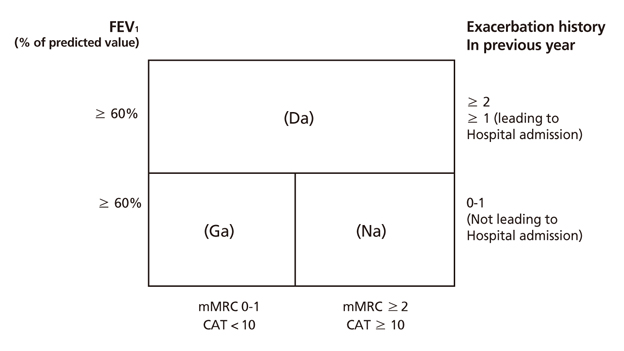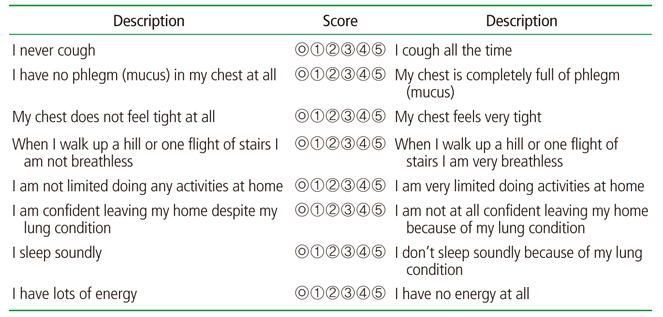 |
 |
- Search
| J Korean Med Assoc > Volume 61(9); 2018 > Article |
Abstract
References
Figure 1
COPD-6. A chronic obstructive pulmonary disease screening device measuring forced expiratory volume in one second and forced expiratory volume in six seconds (courtesy of Vitalograph).

Figure 2
Combined chronic obstructive pulmonary disease assessment (forced expiratory volume in one second [FEV1], symptom, acute exacerbation). Group (Ga): low risk, low symptom. FEV1 ≥60% of predicted value and no or one exacerbation in previous year, modified Medical Research Council (mMRC) 0 to 1 (or COPD Assessment Test [CAT] <10). Group (Na): low risk, high symptom. FEV1 ≥60% of predicted, no acute exacerbation or one in previous year, mMRC ≥2 (or CAT ≥10). Group (Da): high risk. Regardless of mMRC or CAT score, FEV1 <60% of predicted value or two acute exacerbation or one admission history related to acute exacerbation.

Table 1
Key indicators for considering the diagnosis of COPD

Considering COPD, and perform spirometry, if any of these indicators are present in an individual over age 40. These factors are not diagnostic themselves, but the presence of multiple key indicators increases the probability of the diagnosis of COPD. Spirometry is required to establish the diagnosis of COPD. Reproduced from Korea Academy of Tuberculosis and Respiratory Diseases. COPD clinical practice guidelines revised in 2018 [Internet]. Seoul: Korean Academy of Tuberculosis and Respiratory Disease; 2018, with permission from Korea Academy of Tuberculosis and Respiratory Diseases [4].
COPD, chronic obstructive pulmonary disease.
- TOOLS
-
METRICS

-
Related articles in
J Korean Med Assoc -
Updated view on the treatment of chronic obstructive pulmonary disease in Korea2021 March;64(3)
Anesthetic management of patients with chronic obstructive pulmonary disease2020 September;63(9)
Pharmacotherapy of Chronic Obstructive Pulmonary Diseases1998 April;41(4)
Definition, Epidemiology and Pathogenesis of Chronic Obstructive Pulmonary Disease2006 April;49(4)
Pathophysiology of Chronic Obstructive Pulmonary Disease2006 April;49(4)










